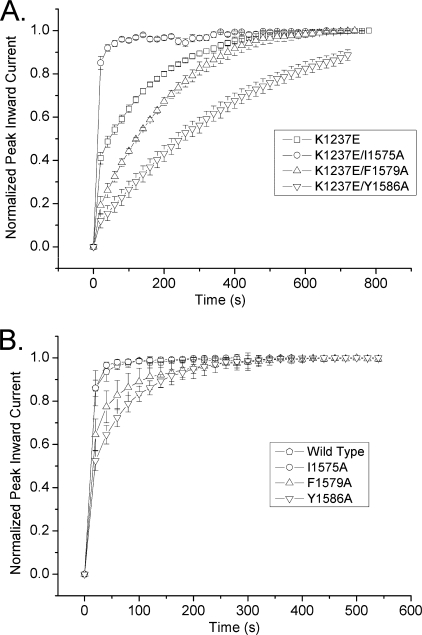FIGURE 3.
IUS is modulated by mutations in the DIV-S6 segment. Time course of recovery from a 300-s conditioning prepulse to −20 mV. Experimental protocol was as in Fig. 1. Maximum inward currents during recovery were normalized to the level after full recovery (n = 6–8). Data points were fitted with Equation 1 (lines). Fitting parameters are presented in Table 1. A, shown is a comparison of the time course of recovery of K1237E channels and the combination of K1237E with the DIV-S6 mutants I1575A, F1579A, and Y1586A. These amino acids in DIV-S6 are considered to face the pore (Fig. 2B) and are, thus, likely candidates for interaction with site 1237 in the DIII P-loop. Whereas the addition of F1579A and Y1586A enhanced recovery from IUS in K1237E background, the addition of I1575A protected K1237E channels from entry into the IUS state. B, shown is a comparison of the time course of recovery of wild type channels and the DIV-S6 mutants I1575A, F1579A, and Y1586A. F1579A and Y1586A show enhanced ultra-slow recovery, whereas the time course of recovery in I1575A is comparable with wild type channels.

